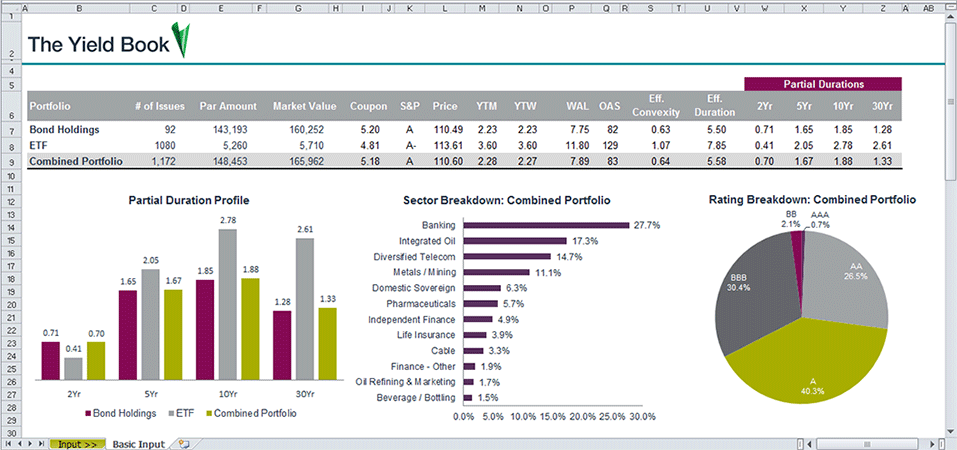How to Evaluate an ETF
Post on: 2 Июнь, 2015 No Comment

With so many ETFs available, it is important to understand which product will work best to achieve your portfolio objectives.
1. Benchmark Composition
The starting place for evaluating an ETF is its underlying index. Examination of the securities that comprise the benchmark, from their sector exposures and weightings to capitalization to country exposure is critical to setting expectations for the ETF. At the outset of identifying the right ETF to achieve a portfolio objective, a match must exist between the securities within the benchmark index and the desired asset allocation.
Its crucial to really study an ETFs holdings, because although several ETFs may cover the same market segment, one might track an index of a few dozen securities, while another tracks hundreds, or even thousands. A more diverse index means the risk is less concentrated—but it can also mean diluted exposure, or exposure to different sectors than originally intended.
Its not just the holdings names that matter: How holdings are concentrated is crucial, too. Some indexes weight their holdings more or less equally, while others allow one or two big names to shoulder the burden. Some aim for broad market exposure, while others take risks in an attempt to outperform the market.
2. Benchmark Construction
Once the securities in the ETF are identified, the methodology the index uses to select and weight its holdings should be examined. Some ETFs rely on passive, well-established indexes, while others track newer, more innovative benchmarks.
Verification of the benchmarks performance relative to its stated objective is extremely important. While most ETF portfolios reproduce their benchmarks exactly, its not possible for all ETFs in all asset classes to do so. For total market bond funds, for example, it would be virtually impossible for the fund to purchase the thousands of bonds needed to build a creation basket exactly matching the underlying index. In these cases, fund managers rely on a more active optimization or sampling approach to screen their securities, which can affect a funds ability to track its benchmark.
3. Fund Liquidity
Its important to understand an ETFs liquidity, or how easily the fund can be bought and sold. The more liquid a fund is, the lower its bid/ask spread and the more likely it is to trade in line with its true net asset value.
An ETFs liquidity stems from two sources: The liquidity of the fund itself, and the liquidity of its underlying shares. Funds with higher average daily trading volumes and more assets under management tend to trade at lower spreads than funds with less daily trading or lower assets. But even funds with limited trading volume can trade at tight spreads if the underlying securities of the fund are liquid.
An ETF that invests in S&P 500 stocks, for example, will likely be more liquid than one that invests in Brazilian small-caps or alternative energy companies. Because funds can always create or redeem shares, smaller ETFs may be more liquid than they appear.
4. Tracking error
Tracking error, or how far away an ETF trades relative to its benchmark, can be influenced by several factors. If a manager uses the aforementioned optimization or sampling strategies, for example, that could lead to higher tracking error, since the ETFs composition wont exactly match that of its underlying index.
Tracking error also results from higher expense ratios, manager skill, or because an ETF’s holdings must be adjusted to meet strict IRS diversification standards.














